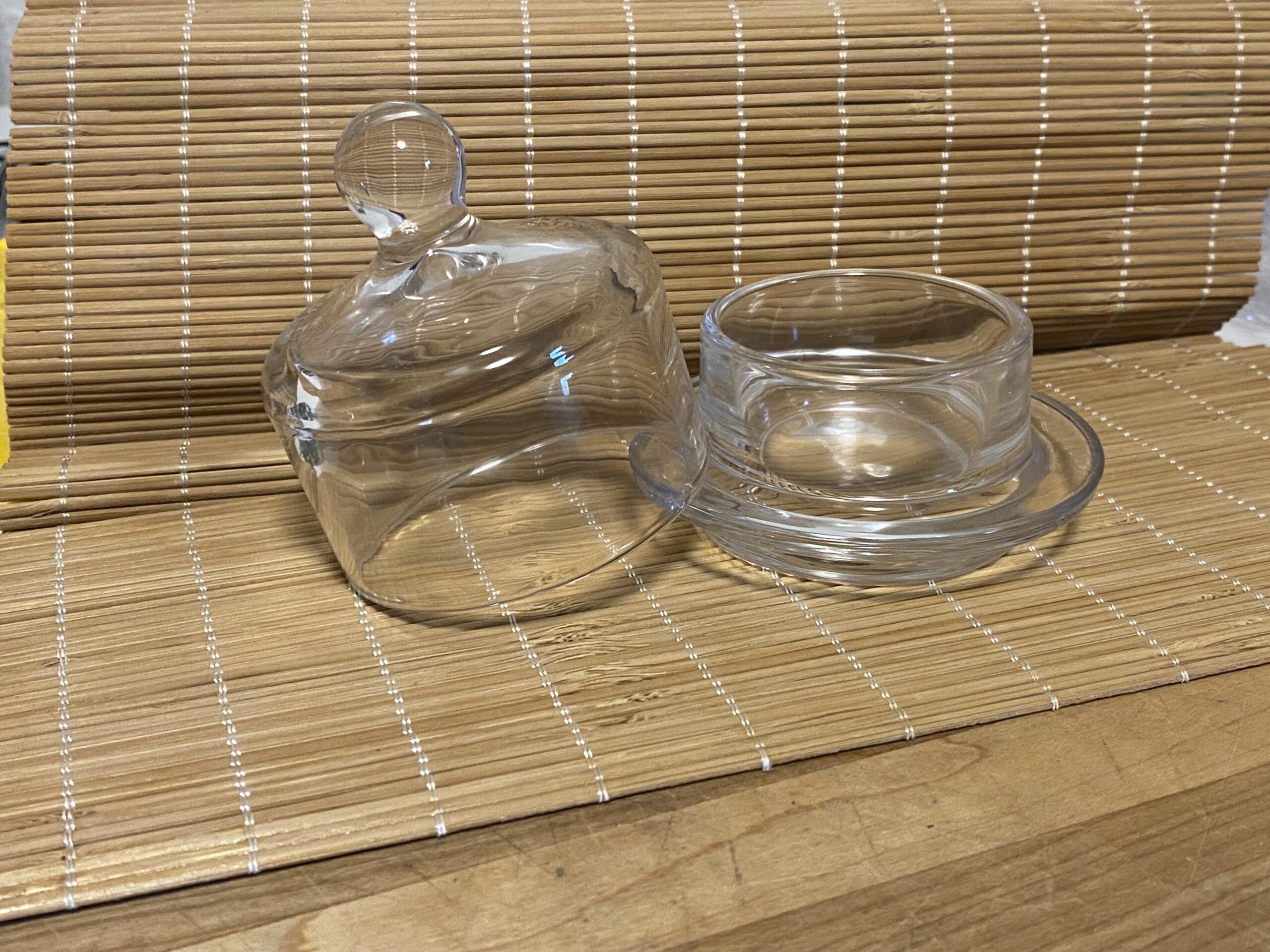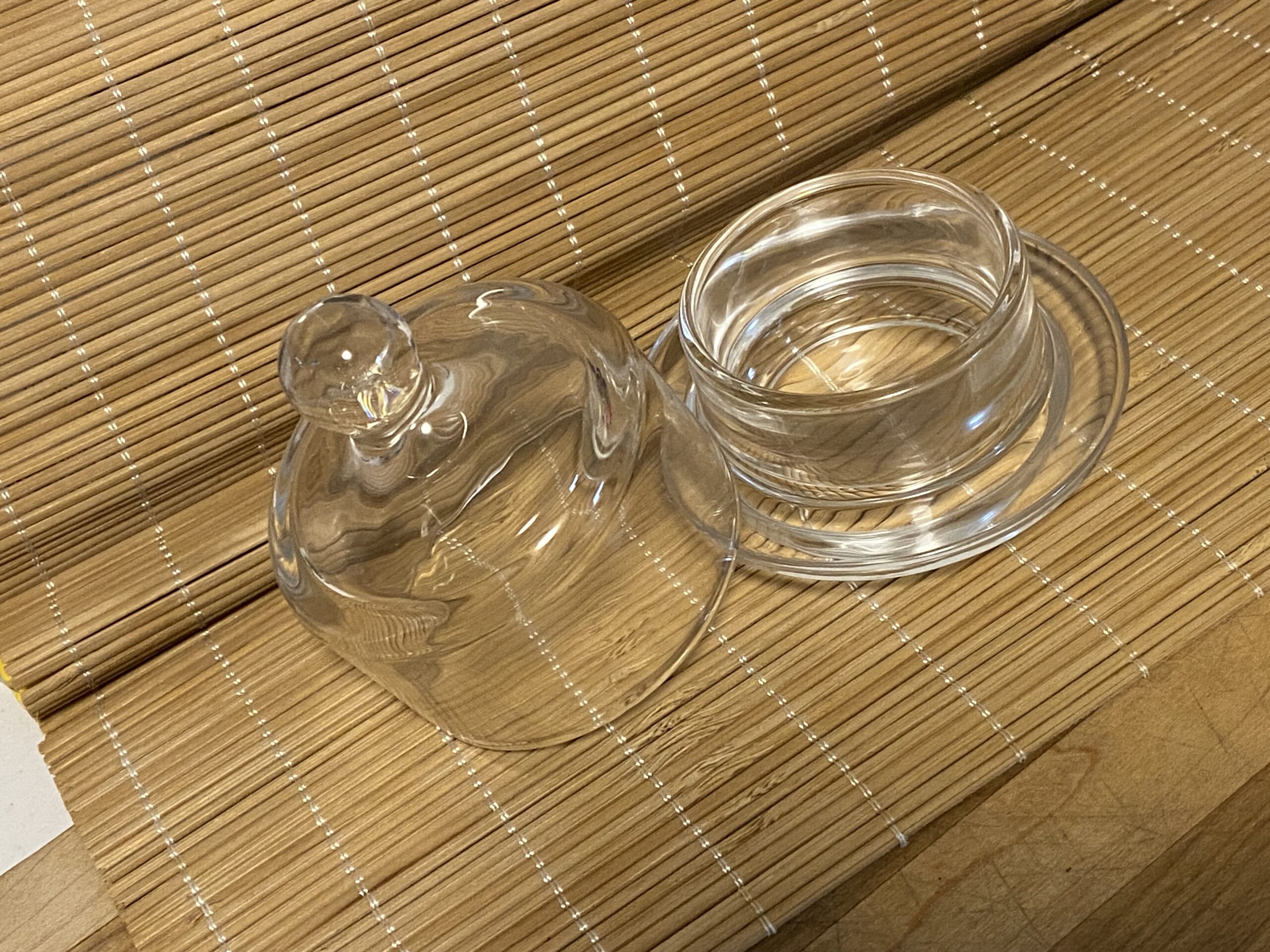Full XRF Test Results for Glass Butter Dish (Amazon Purchase)
Introduction (for those new to this website):
Tamara Rubin is a Federal award-winning independent advocate for consumer goods safety and a documentary filmmaker. She is also a mother of Lead-poisoned children, her sons were acutely Lead-poisoned in 2005. Since 2009 Tamara has been using XRF testing (a scientific method used by the U.S. Consumer Product Safety Commission) to test consumer goods for toxicants (specifically heavy metals), including Lead, Cadmium, Mercury, Antimony, and Arsenic. All test results reported on this website are science-based, accurate, and replicable. Items are tested multiple times, to confirm the test results for each component tested. Tamara’s work was featured in Consumer Reports Magazine in February of 2023.
April 30, 2023 — Sunday
XRF Test Results for the Glass Butter Dish Pictured
Amazon Affiliate link for this product: https://amzn.to/41UEm4a.
Some additional reading:
- To learn more about XRF testing, click here.
- To read more about Clear Glass items we have tested, click here.
- For the menu of this website (where you can look through different categories of the items Lead Safe Mama, LLC has tested), click here.
- To learn more about sending in an item from your home for Lead Safe Mama, LLC to test, click here.
Color-Code Key to XRF Readings Below
Metals noted in RED are considered toxic heavy metals in most applications (none were detected in this case).
Metals noted in ORANGE are considered toxic in some applications (specifically with ingestion), but are not necessarily concerning in the product discussed in this article.
Metals noted in BLUE are not considered toxic in this application.
Metals noted in GRAY were not found to be present (with the low threshold of detection for the XRF instrument normally falling in the single or double-digit ppm for most metals).
Reading #1) Flat Part of Base
60-second test
- Lead (Pb): non-detect (low threshold of detection 7 ppm)
- Cadmium (Cd): non-detect
- Tin (Sn): non-detect
- Mercury (Hg): non-detect
- Selenium (Se): non-detect
- Barium (Ba): 2,823 +/- 78 ppm
- Chromium (Cr): 430 +/- 255 ppm
- Antimony (Sb): non-detect
- Nickel (Ni): non-detect
- Copper (Cu): 43 +/- 22 ppm
- Zinc (Zn): 7,438 +/- 180 ppm
- Titanium (Ti): non-detect
- Manganese (Mn): non-detect
- Zirconium (Zr): non-detect
- Indium (In): non-detect
- Iron (Fe): 178 +/- 89 ppm
- Bismuth (Bi): non-detect
- Vanadium (V): non-detect
- Platinum (Pt): 97 +/- 45 ppm
- Gold (Au): non-detect
- Cobalt (Co): non-detect
- No other metals were detected in consumer goods mode.
Reading #2) Knob of Lid
180-second test
- Lead (Pb): non-detect (low threshold of detection 4 ppm)
- Cadmium (Cd): non-detect
- Tin (Sn): non-detect
- Mercury (Hg): non-detect
- Selenium (Se): non-detect
- Barium (Ba): 3,331 +/- 52 ppm
- Chromium (Cr): 545 +/- 147 ppm
- Antimony (Sb): non-detect
- Nickel (Ni): non-detect
- Copper (Cu): 23 +/- 12 ppm
- Zinc (Zn): 7,660 +/- 105 ppm
- Titanium (Ti): non-detect
- Manganese (Mn): non-detect
- Zirconium (Zr): non-detect
- Indium (In): non-detect
- Iron (Fe): 177 +/- 51 ppm
- Bismuth (Bi): non-detect
- Vanadium (V): non-detect
- Platinum (Pt): 110 +/- 51 ppm
- Gold (Au): non-detect
- Cobalt (Co): 64 +/- 26
- No other metals were detected in consumer goods mode.
In Conclusion
This butter dish is an excellent choice, safe by all standards!
~ End ~
Amazon links are affiliate links. If you purchase something after clicking on one of these links, Lead Safe Mama, LLC may receive a percentage of what you spend at no extra cost to you.
Never Miss an Important Article Again!
Join our Email List













Hi, curious why did you test this – I had thought clear glass was always a safe bet?
No – that’s not the case. I test things that my readers ask me to test (that they help cover the cost of testing for or that they send in for testing.) That’s how this works 🙂 There’s a lot of clear glass that tests positive for Lead. Please click the link above to the clear glass category on the website to look through some examples.
Tamara
Ok got it. Are there any guidelines you advise we follow or is it a total crapshoot? I always avoid painted products, as well as antiques. Beyond that, are there general guidelines we should keep in mind? Thank you so much!